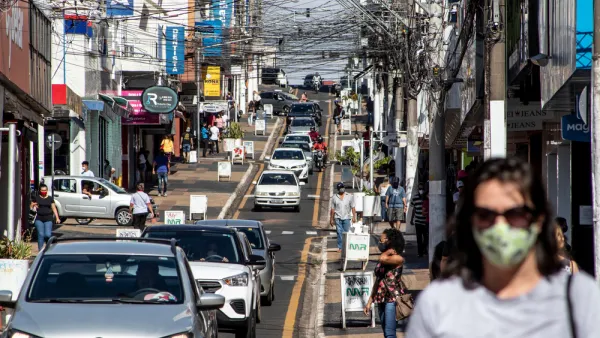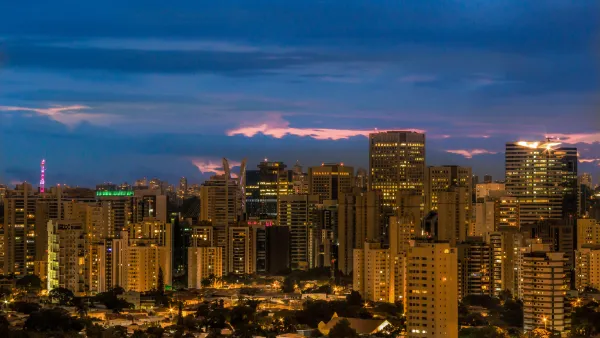Leão Serva reports on the case of São Paulo, where a value capture funding mechanism has raised a huge amount of public revenue to pay for infrastructure projects and public housing.
Here's how the São Paulo value capture program works, according to an article by Leão Serva: "City leaders identify a redevelopment zone, and issue a number of bonds to be sold to developers at auction. The bonds entitle the developers to build bigger buildings than the law would normally allow. Revenue from the bond sales are invested back into housing, roads and other infrastructure in the same redevelopment zone."
Especially in areas with high demand for new construction, developers have not been timid in bidding for these bonds. "And the auctions have yielded the city a massive windfall. In 12 years, São Paulo has raised about R$ 4.5 billion, or close to $2 billion in U.S. dollars, through these sales."
"In São Paulo’s case, the action to unlock land value is 'upzoning' an area for more intense development," but Serva also describes other cities or examples where a value capture program can help close the funding gap for badly needed infrastructure investments.
Serva's coverage is one of the rare examples of clear and accessible writing on what could be wonky subject matter. The article also covers some of the criticisms and recommended reforms for the São Paulo program.
FULL STORY: How São Paulo uses “value capture” to raise billions for infrastructure

National Parks Layoffs Will Cause Communities to Lose Billions
Thousands of essential park workers were laid off this week, just before the busy spring break season.

Retro-silient?: America’s First “Eco-burb,” The Woodlands Turns 50
A master-planned community north of Houston offers lessons on green infrastructure and resilient design, but falls short of its founder’s lofty affordability and walkability goals.

Delivering for America Plan Will Downgrade Mail Service in at Least 49.5 Percent of Zip Codes
Republican and Democrat lawmakers criticize the plan for its disproportionate negative impact on rural communities.

Test News Post 1
This is a summary

Test News Headline 46
Test for the image on the front page.

Balancing Bombs and Butterflies: How the National Guard Protects a Rare Species
The National Guard at Fort Indiantown Gap uses GIS technology and land management strategies to balance military training with conservation efforts, ensuring the survival of the rare eastern regal fritillary butterfly.
Urban Design for Planners 1: Software Tools
This six-course series explores essential urban design concepts using open source software and equips planners with the tools they need to participate fully in the urban design process.
Planning for Universal Design
Learn the tools for implementing Universal Design in planning regulations.
EMC Planning Group, Inc.
Planetizen
Planetizen
Mpact (formerly Rail~Volution)
Great Falls Development Authority, Inc.
HUDs Office of Policy Development and Research
NYU Wagner Graduate School of Public Service




























